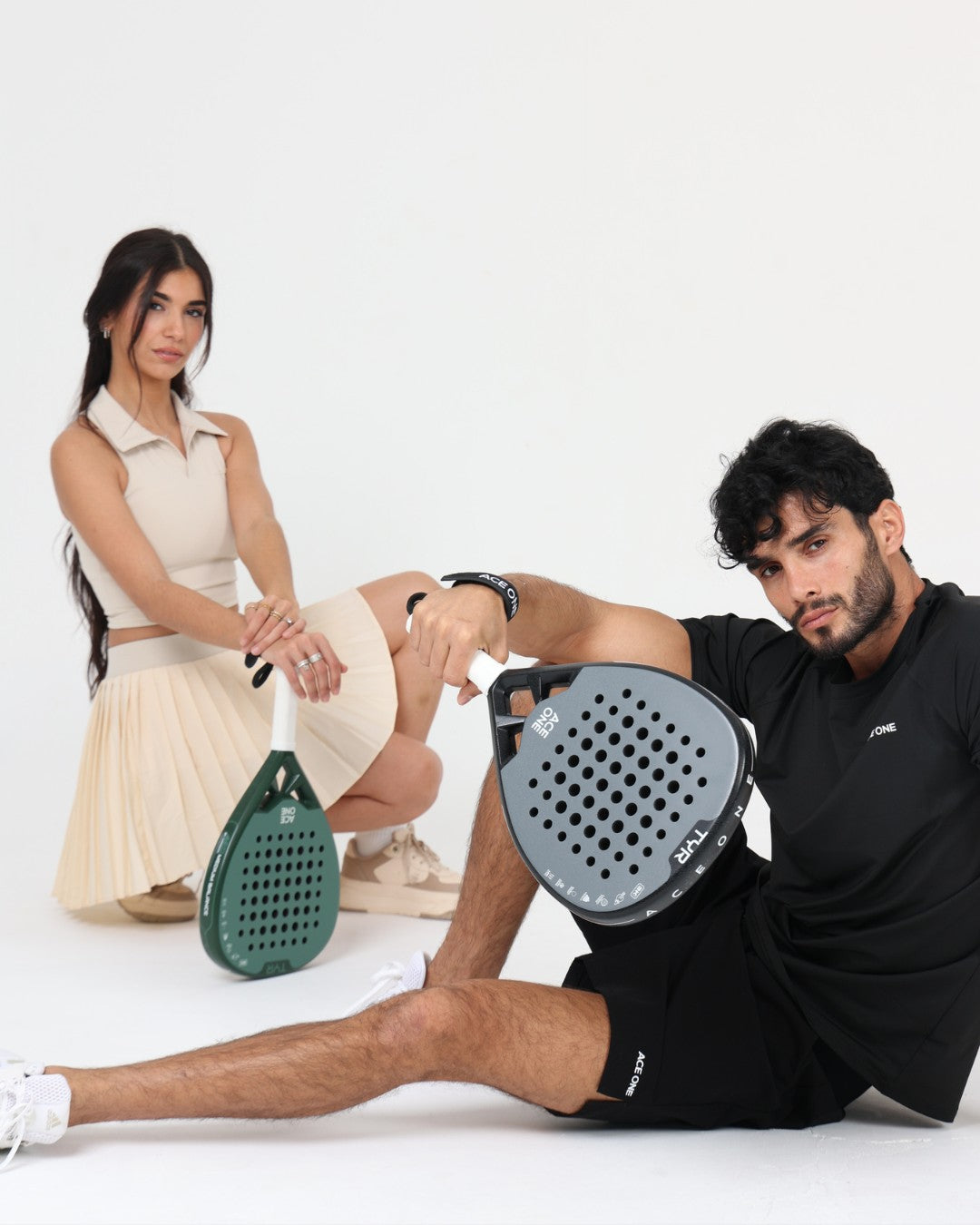Choosing the right position on a padel court—left side (backhand) or right side (forehand)—is crucial for enhancing your performance and understanding your role within a doubles team. This decision often depends on your playing style, strengths, and personal preferences. But how do you determine where you should be positioned?
Our team drafted you a complete and easy guide, we will dive deep into the characteristics of each position and help you make an informed choice.
Playing padel is about strategy and synergy, so let’s explore which side will maximize your strengths and contribute to your team’s success.
1. Understanding the Basics: Left Side vs. Right Side
Padel is always played in doubles, meaning that the court is shared between two partners who need to complement each other’s style and abilities. The dynamics of the game are vastly different depending on whether you are positioned on the left or right side. So what does each position imply?
-
Left Side: Often referred to as the “backhand” side, this position is more demanding in terms of power and aggressiveness. You’re expected to cover a larger part of the court and frequently switch to defensive shots. Players in this position typically have a strong backhand, a powerful smash, and good physical endurance.
-
Right Side: Known as the “forehand” side, this position requires more control and strategic placement of the ball. It’s about building the point, setting up plays, and giving your partner the opportunity to finish. Players on the right side usually possess excellent control, precise volleys, and a knack for placing the ball in difficult spots.
2. Key Characteristics of the Left-Side Player
If you are considering playing on the left side, here are some traits and skills you should have:
a) Strong Backhand
Since the left side is often referred to as the “backhand” side, your backhand should be solid. You’ll be using it more frequently, especially during aggressive rallies or when you’re aiming for deep shots.
b) Aggressive Playstyle
The left side is generally occupied by more aggressive players who can take charge of the court. If you like to dominate points, go for strong smashes, and finish with powerful shots, this is your spot.
c) Good Overhead Shots
You will often have to handle high balls and smashes coming your way. The ability to hit bandejas (a defensive overhead shot), smashes, and powerful lobs are critical.
d) Physical Endurance
Because the left side covers more area in crucial points, you’ll need to be quick, agile, and have good stamina. This side requires more running and retrieving than the right side, so physical fitness is a must.
3. Key Characteristics of the Right-Side Player
If you’re leaning towards the right side, these are the attributes you should bring to the game:
a) Excellent Forehand
The right side is also known as the “forehand” side. A consistent and well-controlled forehand is essential. You’ll be using it to place the ball strategically and control the pace of the game.
b) Strategic Thinking
Playing on the right side means being the team strategist. Your role is to create opportunities for your partner to finish the point. Placement, angles, and consistency are your key weapons.
c) Ball Control and Patience
Unlike the left side, where the game can get quite aggressive, the right side requires a lot of patience. Your job is to keep the ball in play, build the point, and wait for the right moment to strike.
d) Defensive Skills
If your opponent attacks, you’ll often be the first line of defense. Your ability to retrieve, lob, and block volleys effectively will make a huge difference.
4. How to Choose the Best Position Based on Your Playing Style
The decision on whether to play on the left or right side should be based on your strengths and the synergy with your partner. Here’s how to identify your best fit:
a) Are You a Power Player or a Strategist?
-
Power Player: If you’re a player who likes to end points quickly, has strong smashes, and enjoys taking risks, you should consider playing on the left side. You’ll have the chance to dominate the game, take control during crucial moments, and showcase your powerful shots.
-
Strategist: If you’re more focused on placement, consistency, and playing the waiting game, the right side will suit you better. You’ll be the backbone of the team, setting up plays and supporting your partner.
b) Are You Comfortable Defending?
The left side tends to be more challenging when you’re on defense. If you struggle with lobs and quick movements, the right side might be more forgiving. However, if you’re agile and enjoy counter-attacking, the left side could be your place to shine.
5. Consider Your Partner’s Playing Style
Choosing your side isn’t just about your strengths. It’s equally important to consider your partner’s abilities:
- If your partner is a strong finisher: You might want to play on the right side, allowing them to dominate with smashes and aggressive plays.
- If your partner is more of a control player: Consider taking the left side, where you can be the one to execute the powerful shots.
6. Practical Tips for Beginners
For beginners or players just starting out, it’s recommended to begin on the right side. This position offers a bit more forgiveness and allows you to focus on improving your control and consistency before moving on to the more demanding left side.
7. Why Switching Sides Can Benefit You
Even if you’ve settled into a preferred side, occasionally switching positions during training or casual games can be extremely beneficial. It allows you to:
- Develop new skills: Master both forehand and backhand shots.
- Become a more versatile player: Understanding both sides will make you a more complete and unpredictable player.
- Improve synergy: Knowing what your partner is going through on the other side will enhance communication and teamwork.
8. Ace One’s Tip: Choose Versatility with the TŸR Racket
Whether you’re a left-side aggressor or a right-side strategist, having the right racket is essential to optimizing your game. Our Ace One TŸR racket is designed for intermediate to advanced players, offering a perfect balance of power and control. With its medium balance and 350g weight, it adapts to various playing styles, making it an ideal choice for players looking to solidify their position on either side of the court.
- 100% Carbon Frame: Ensures stability and precision in your shots.
- 3K Carbon Surface: Enhances power returns and gives a superior feel.
- Sandblasted Finish: Perfect for players who love to add spin and control.
Ready to master your position? Explore the Ace One TŸR here.
Conclusion: Find Your Perfect Side on the Court
Choosing between the left and right side in padel is about understanding your strengths, your playing style, and how you complement your partner. While power players may thrive on the left, strategists will feel at home on the right. No matter where you decide to play, remember that the goal is to have fun and improve as a team.
If you’re looking to elevate your game, the right equipment can make all the difference. Check out the Ace One TŸR and see how it can adapt to your preferred style, whether you play left or right!







